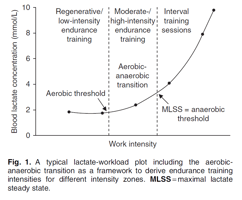Cycling Research Digested: Benefits of Strength Training for Cyclists
In order to improve your performance and reduce the risk of injury in cycling athletes should look at supplementing their training plan with off-the-bike resistance training. If implemented correctly under the supervision of a qualified strength and conditioning coach, research has identified some of the benefits below:
- Heavy strength training (twice per week for ≥ 8 weeks) improves cycling performance (e.g. short time trial effort after prolonged sub-maximal ride) by up to 7%.
- Increased muscular strength reduces muscular force, oxygen and energy cost as well as heart rate and rating of perceived exertion at a fixed absolute workload i.e. improves cycling economy (2)
- Fiber type transition to more fatigue-resistant fibers ‘preserves’ anaerobic capacity for later in a ride
- Increased power to weight ratio and capacity to deliver the same power profile after hours of sub-maximal riding (‘fatigue resistance’)
- Helps to optimise cycling biomechanics e.g. pedaling efficiency by shortening the phase of negative crank torque (up to 14%) during the upstroke of the pedal revolution
- May improve comfort on the bike and alleviate common ailments (e.g. knee, lower back and wrist pain) by targeting lumbo-pelvic mobility, recruitment of hip and knee stabilisers, strengthening of the posterior chain and increasing strength-endurance of scapula and core stabilisers

It is also important to note that an athlete should only consider implementing heavy strength training into their routine if they have a high training age with regards to resistance training. The foundational elements of resistance training should first be established before trying to progress to quickly. These elements would be:
- Mobility: the ability to actively move a joint through its full range of motion. In other words how well an athlete is able to move their own body through its full range of motion
- Flexibility: the ability to move a joint through its passive range of motion.
- Correct biomechanics: this is vital to establish before prescribing any exercise. The assessment of the athletes biomechanics should guide the prescription of exercise.

To bring you the most evidence-based and cutting information in the fields of sports and exercise science and health, SSISA works alongside the UCT Research Centre for Health through Physical Activity, Lifestyle and Sport (HPALS) to disseminate the latest research. HPALS research focuses on optimizing human performance and promoting health and well-being through physical activity, sports participation, healthy eating and good sleep hygiene. Their work begins at the DNA, to the human performance laboratory and ultimately to the community.
SSISA exists to translate, simplify and embed science in sporting and health practice. SSISA has developed the Rugby Performance Society with the aim of providing best practice insights that positively impact athletes, coaches, teams and organisations.
Should you be looking for more information on this please get in touch with Warwick Cross at wcross@ssisas.com
Yours in Sports Science,
The Cycling Performance Society
References:
- Sunde, A., Støren, Ø., Bjerkaas, M., Larsen, M. H., Hoff, J., & Helgerud, J. (2010). Maximal strength training improves cycling economy in competitive cyclists. The Journal of Strength & Conditioning Research, 24(8), 2157-2165.
- Loveless, D. J., Weber, C. L., Haseler, L. J., & Schneider, D. A. (2005). Maximal leg-strength training improves cycling economy in previously untrained men. Medicine and science in sports and exercise, 37(7), 1231.
- Paton, C. D., & Hopkins, W. G. (2005). Combining explosive and high-resistance training improves performance in competitive cyclists. The Journal of Strength & Conditioning Research, 19(4), 826-830.
